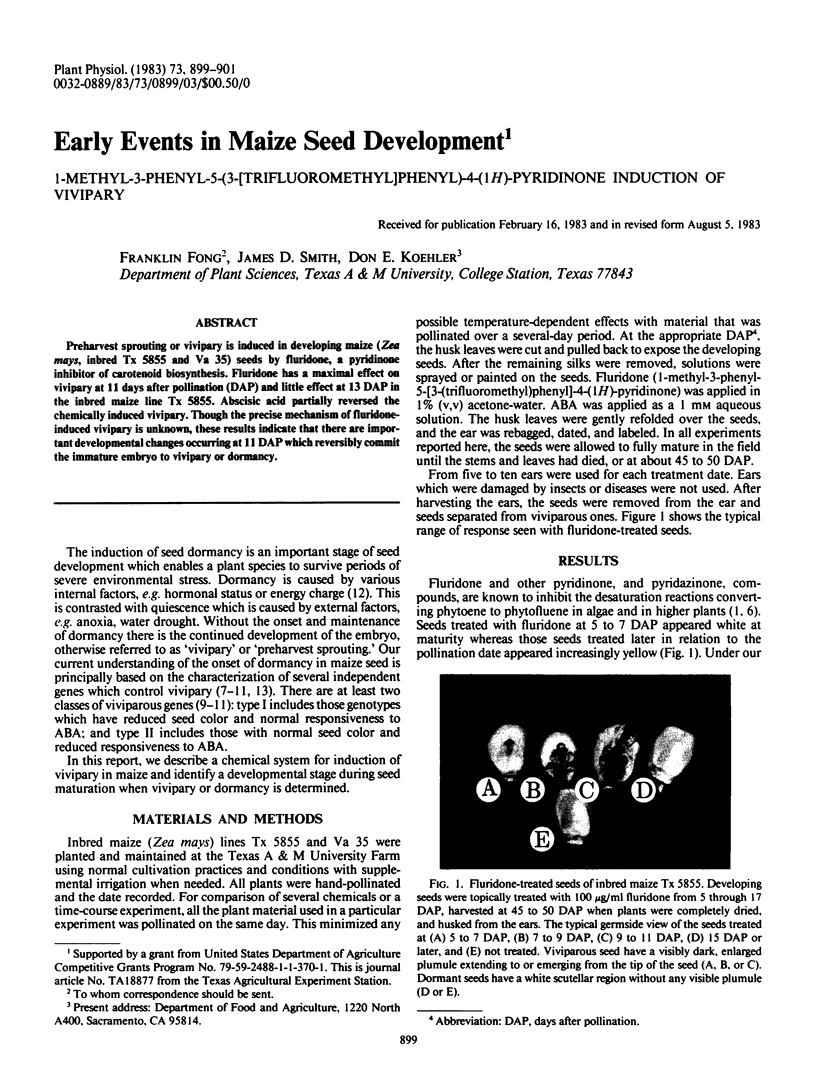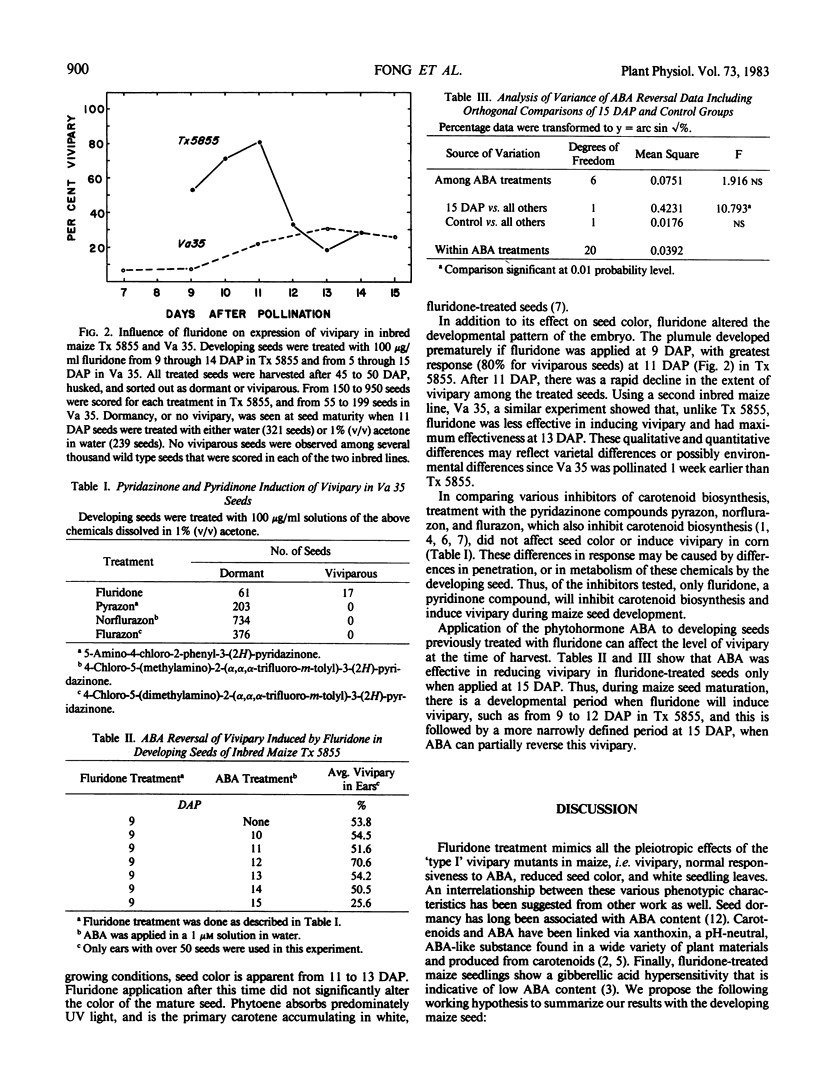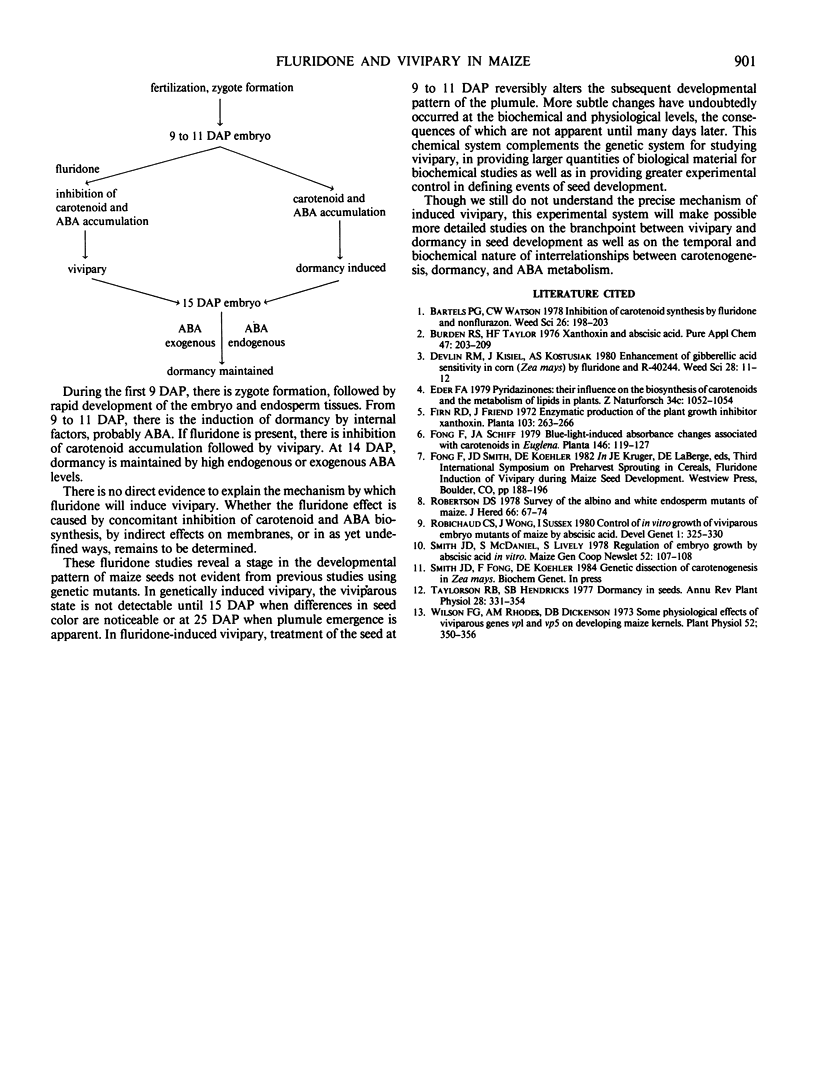Abstract
Preharvest sprouting or vivipary is induced in developing maize (Zea mays, inbred Tx 5855 and Va 35) seeds by fluridone, a pyridinone inhibitor of carotenoid biosynthesis. Fluridone has a maximal effect on vivipary at 11 days after pollination (DAP) and little effect at 13 DAP in the inbred maize line Tx 5855. Abscisic acid partially reversed the chemically induced vivipary. Though the precise mechanism of fluridone-induced vivipary is unknown, these results indicate that there are important developmental changes occurring at 11 DAP which reversibly commit the immature embryo to vivipary or dormancy.
Full text
PDF


Images in this article
Selected References
These references are in PubMed. This may not be the complete list of references from this article.
- Wilson G. F., Rhodes A. M., Dickinson D. B. Some Physiological Effects of Viviparous Genes vp(1) and vp(5) on Developing Maize Kernels. Plant Physiol. 1973 Oct;52(4):350–356. doi: 10.1104/pp.52.4.350. [DOI] [PMC free article] [PubMed] [Google Scholar]



